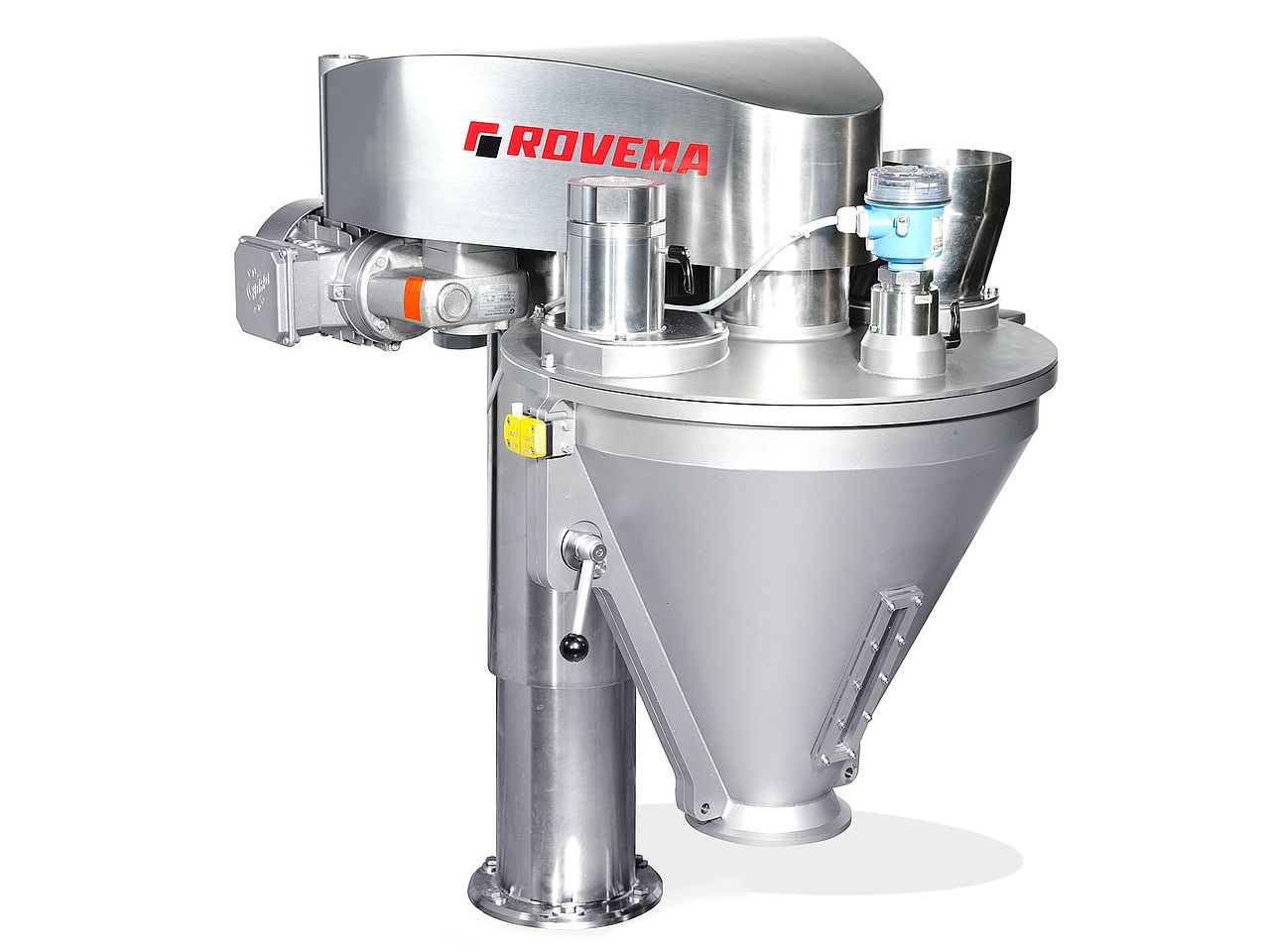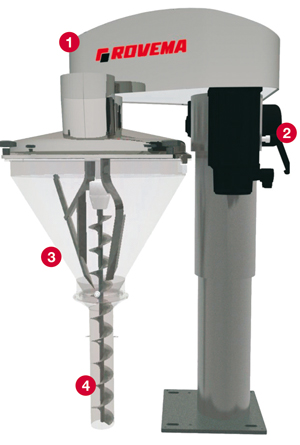Auger Doser SDH
In Hygienic Design for highest demands
The hygienic design simplifies and shortens the process of the efficient cleaning.
Almost every powder and smallgrained product like milk powder, coffee, spices, sugar and chemicals can be handled.
It enables a very high degree of hygienic perfection in an efficient way.
By the exact dosing, even with difficult products, the auger doser SDH fulfills the economic demand of the user on the base of the legal standards.
Benefits and advantages
- Easiest cleaning due to hygienic execution hopper in stainless steel execution (304 or 316 grade) available in closed or split version
- Change of auger without tools
- Precise and gentle product handling, dosing auger controlled by servo motor for highest accuracy of positioning
- Motor driven height adjustment via scale without additional drive
- Individual control of dosing unit by electronic integration of all functions into machine control or as retrofit with own control unit
- Separate driven stirrer for homogenization and constant filling of auger doser
Auger Condition Monitor (ACM)
Maximum product protection during the dosing process!
Our ACM determines the vibrations at the stainless steel hopper by means of a sound sensor. Thus reference values for individual recipes and packaging tasks can be defined and constantly compared with the actual values during production.
If a deviation from the reference value is detected, e.g. due to metallic friction, warning messages and/or a machine stop are issued.
With this method, contamination by the smallest particles - not detectable in the metal detector - can be detected in time.
Automated Wet Cleaning for auger dosers (AWC)
Our new Automated Wet Cleaning for auger dosers cleaning without chemicals – reduces down times for cleaning and drying by up to 90%.
Since frequent product changes are common during production, many cleaning intervals throughout the day are necessary to avoid product contamination. In the past only the use of chemicals allowed truly hygienic cleaning results. To reduce cleaning times and to ensure reliable hygienic cleaning without the use of chemicals, ROVEMA together with the University of Applied Sciences in Hanover developed the Automated Wet Cleaning AWC for auger dosers. Its effectiveness has been validated for brown sugar and milk powder, amongst others.
A secure and user-friendly cleaning system that works without dismantling, chemical cleaners and manual labour. Human health, the environment and resources are treated with care, cleaning times and down times are reduced, and the production process simplified.
Ergebnis ist ein sicheres und anwenderfreundliches Reinigungssystem, welches ohne Demontage, ohne chemische Reinigungsmittel und ohne eine manuelle Nachbehandlung auskommt. Mensch, Umwelt und Ressourcen werden geschont, Reinigungs- und damit Stillstandszeiten reduziert und Produktionsprozesse vereinfacht.


